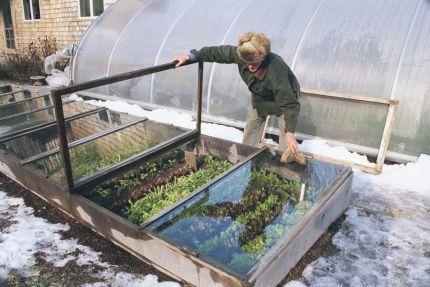This post was written by Hayley Billingsley, a student in the Human Nutrition, Foods & Exercise Program and as well as the Civic Agriculture and Food Systems Minor.
As winter approaches, we look forward to holiday traditions and wonderful food shared with family, but we tend to lose some of the fresh variety that summer offers. No longer are beautiful ripe fruits available locally in abundance, but not to fear! Virginia produce is still available throughout the winter and might offer new flavors and foods you may have not yet experienced. For example, at a recent Thanksgiving meal with friends, the hostess prepared roasted Brussels Sprouts from her garden in Highland County, Virginia (in season through December in Virginia) and I discovered my dreaded childhood food was actually pretty tasty! More examples of foods available at Virginia markets through December include potatoes, apples, broccoli, onions, winter squash, kale, a variety of lettuces and more!
How can this be? Some farmers use heated structures (greenhouses) or even just frames (hoophouses) to create a more friendly environment for plants to grow. By starting with crops that are fairly cold resistant, like brussels sprouts and kales, the plants have a good chance of making it through the winter. Have space in your backyard, check out this tutorial for building your own cold frame and even you can grow a few things in your backyard!
The town of Blacksburg has its own year-round farmer’s market. The hours change slightly as the season gets cooler, but it’s an excellent opportunity to keep an eye on what’s seasonally available. This Friday 12/6, there will be one of several Holiday Craft markets as part of the Winter Lights Festival.
While you’re home on your winter break, browse your local market if it happens to be year-round and incorporate some local ingredients in your favorite holiday dishes! Not to mention the beautiful handmade items created by local vendors make great gifts for friends and family!
Learn more here about what is typically available in Virginia by season.
Once you find your local Brussels Sprouts, here’s a recipe from Ina Garten to do them justice!
Roasted Brussel Sprouts
Ingredients:
1 1/2 pounds Brussels sprouts
3 tablespoons good olive oil
3/4 teaspoon kosher salt
1/2 teaspoon freshly ground black pepper
Directions:
Preheat oven to 400 degrees F.
Cut off the brown ends of the Brussels sprouts and pull off any yellow outer leaves. Mix them in a bowl with the olive oil, salt and pepper. Pour them on a sheet pan and roast for 35 to 40 minutes, until crisp on the outside and tender on the inside. Shake the pan from time to time to brown the sprouts evenly. Sprinkle with more kosher salt and serve immediately.




















 weren’t sure if the usual extra expense of organics were worth it or if the food was better. Let’s break it down to make it a little easier to understand.
weren’t sure if the usual extra expense of organics were worth it or if the food was better. Let’s break it down to make it a little easier to understand.